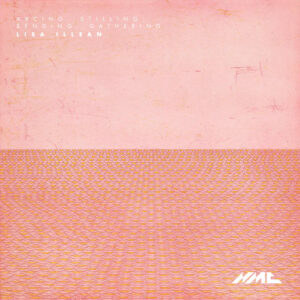Lisa Illean Debut on NMC (CD Review)
Lisa Illean
Arcing, stilling, bending, gathering
NMC Records, 2024
Composer Lisa Illean (b. 1983) is from Australia and has been based in recent years in the UK. Her work encompasses a variety of techniques, including alternate tunings and sampled electronics. These are means to consummately expressive ends, and Illean’s music maintains an organic sensibility irrespective of how the sounds are formed.
The title piece, performed by the Australian Academy of Music, is split into various constellations of sound: small groups of strings, solo piano, and pre-recorded sound. Illean uses detuned pitch collections to make a supple harmonic language. Like much of the composer’s music, the primarily soft dynamics are belied by an underlying intensity.
This intensity comes to the fore in Tiding 2 (Silentium), recorded by the GBSR Duo (percussionist George Barton and pianist Siwan Rhys) and soprano saxophonist David Zucchi. Although much of the music remains hushed, there is a sense of unease in the interwoven counterpoint of the music. Gongs, piano chords, string samples, and sustained saxophone are broken up by sudden emphatic attacks, only to subside into another ominous, overlapping sequence. It culminates with several swells into coloristic chords with shimmering percussion.
The soprano Juliet Fraser has been a champion of Illean’s music, and she appears here in a group of settings of the poet Gerard Manley Hopkins. Fraser and the Explore Ensemble are accompanied by electronics – samples of detuned zithers – which provides a haunting ambience that surrounds the soprano’s emotive singing and ensemble’s own microtonal excursions. Few composers whom I have heard set Hopkins have tapped into the essential melancholia and isolation he often expressed. Illean creates a slowly moving atmosphere that channels the doleful aspects of Hopkins eloquently.
David Robertson conducts the Sydney Orchestra in Land’s End, the final piece on the recording. Illean’s penchant for piano dynamics is made all the more poignant by the held-back quality of the ensemble. Robertson takes care to balance the various textures, a web of sliding tones and piquant verticals alongside occasional brass interjections. The landscape drawings of Latvian artist Vija Celmins were a point of inspiration, and these spare, deserted pictures correspond well to the gradual movement of Land’s End. An ascending harp pattern and sustained solo violin send the piece into a slightly more animated section, as if the patterns of the wind have shifted, and a piano solo that adds arpeggiations doubling the melodic material follows. Wispy descending lines that offset one another gradually crescendo into a smearing of dissonance. A darkly hued cloud of low register harmonies provides a portentous moment, only to have strings and winds return playing pianissimo counterpoint, with single trumpet notes, drums, and soft gongs punctuating the passage. Instruments begin to slide towards the same pitch in octaves, only to have a mysterious and harmonically ambiguous close take over, with ascending piano scales and solo violin bringing the piece to a stratospheric close.
Illean’s music is distinctively compelling, and one expects that more orchestras and ensembles will be clamoring for new pieces from her.
Christian Carey
